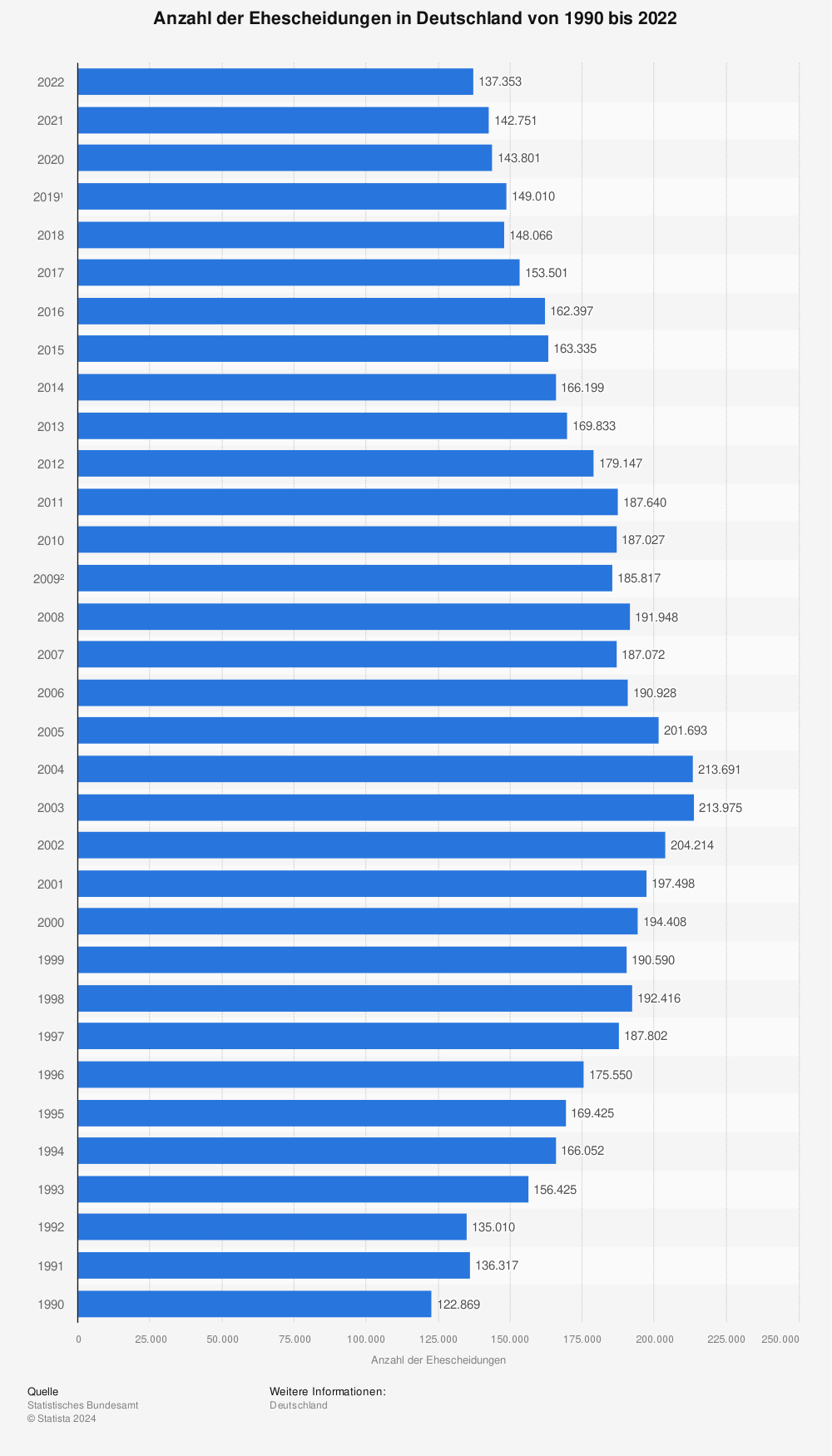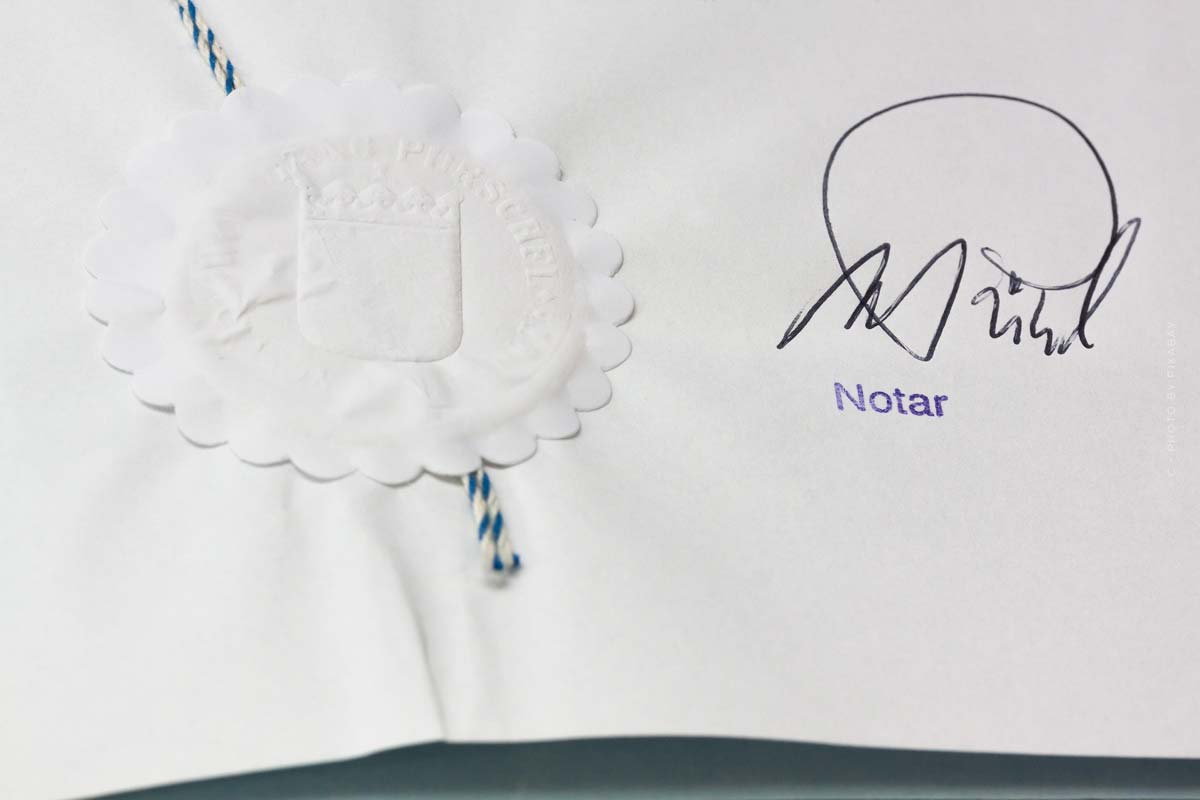Pension rights adjustment: Facts about pensions after marriage
Pension equalisation – Pension equalisation must be carried out by the family courts in most divorces. This regulates the entitlements and prospects for a pension due to old age or reduced earning capacity that the spouses have acquired during the marriage. Marriages of up to three years must apply for pension equalisation, all others can exclude it before the notary or arrange it more closely. Back to the guide: Divorce & Real Estate.
Divorce and pension – the facts about pension equalisation
There are many things to settle in a divorce. From custody to the division of assets to the pension equalization. The latter deals mainly with the pension that was acquired during the marriage and how this is divided fairly between the spouses.
The most important facts in a nutshell:
- In most cases, spouses acquire different levels of pension entitlements during the marriage period
- The aim of pension equalisation: to ensure that both spouses are equally well provided for in old age
- Only the entitlements acquired during the marriage period are taken into account in the pension rights adjustment.
- The period of marriage determines the amount of pension equalisation
- The longer the marriage, the higher the pension equalization
- Pension equalisation is automatically settled at the time of divorce for marriages that have lasted longer than three years. Marriages that have lasted less than three years must apply for pension equalisation.
- The spouses fill in a form giving details of the acquired pension rights.
- The court checks the figures with the pension providers after
- Waiving the pension equalization can be useful for both spouses in some cases
The principle – dividing pension entitlements
The pension entitlements are different for most married couples. This fact is due to the fact that one of the spouses has not worked for a certain period of time due to raising children, has been unemployed or has been employed in the public sector. To compensate for this difference, there is pension equalization, which is intended to ensure that both spouses have good retirement security. However, only the pension that was earned during the marriage period is taken into account. The pension earned is divided up in the divorce in such a way that both spouses leave the marriage with the same amount.
- In most cases, spouses acquire different levels of pension entitlements during the marriage period
- The pension rights adjustment provides for equally good pension security
The marriage period – relevant for the amount of the pension rights adjustment
Since only the pension entitlements that were acquired during the marriage are included in the pension rights adjustment, the marriage period is decisive for the amount of the adjustment. The marriage period runs from the beginning of the month in which the marriage was entered into until the end of the month preceding the service of the divorce petition. If the period of marriage is less than three years, no pension equalisation has to be carried out in the divorce unless one of the spouses insists on it.
Pension entitlements acquired during the separation period are also included in the pension rights adjustment. However, if the separation period is unusually long, it may be justified under certain circumstances to calculate the pension equalisation only for the period from the marriage until the separation. No pension equalization can be approved by the court only in divorces involving special misconduct. This case is when one spouse has massively threatened or injured the other.
- The period of marriage determines the amount of pension equalisation
- The longer the marriage, the higher the pension equalization
- Only the entitlements acquired during the marriage period are taken into account in the pension rights adjustment.
The practice – step by step to pension equalisation
The equalisation of pensions is automatically regulated in divorces where the marriage has lasted more than three years. The spouses receive a questionnaire in advance in which they must provide information on existing insurance policies and entitlements, state insurance numbers and disclose agreements on pension equalisation. These questionnaires are then returned to the court so that it can have the information checked with the pension provider. The various pension providers are required to provide the family court with their respective pension entitlements. The figures are then sent back to the spouses by the court so that they can check the figures and comment on the information if necessary. The pension equalisation is then determined at the divorce hearing in court.
- The pension equalisation is automatically settled at the time of divorce for marriages that have lasted longer than three years.
- The spouses fill in a form giving details of the acquired pension rights.
- The court checks the figures with the pension providers after
Pension rights adjustment – division of pensions in the event of divorce
Waiving the pension rights adjustment – useful in some cases
Depending on the individual situation, it may make sense not to have the pension equalisation settled by the court. If, for example, the costs of division are too high or if the settlement would lead to an unfair result, it is possible for the spouses to settle the settlement between themselves. If both partners agree to this, a settlement amount can be paid instead of the transfer of the entitlements or a consideration can be agreed. In the case of marriages with a marriage contract, the issue is usually settled from the outset, as the equalisation of pensions is stipulated in such contracts from the outset.
- The waiver can make sense for both spouses in some cases
- Marriages that lasted less than three years must apply for pension equalisation at the time of divorce.
The most important questions – everything about pension rights adjustment
The topic of divorce and especially pension equalization often raises many questions. Lukinski’s experts answer the most important questions on the topic of pension equalization in divorce so that you know exactly what is going on and no more questions remain unanswered.
What does pension equalisation mean in the event of divorce?
This is nothing other than the equalisation of pensions. This regulates how pension entitlements acquired during the marriage are dealt with after the marriage. The aim of pension equalisation is to ensure secure old-age provision for both spouses.
How much does a no-fault divorce cost?
The cost of a divorce depends on a number of factors. Some divorces are generally cheaper than contested ones, simply because they take less time. However, other factors include the assets of the spouses, which means that individual costs must be decided on a case-by-case basis.
What do you need for the divorce?
Whether the divorce is unanimous or contested, some documents are always needed. These documents include the marriage certificate or the family record book in the original or a certified copy, depending on the case, the birth certificates of minor children and, if available, the marriage contract or the divorce settlement agreement.
What does a divorce cost and who pays?
The amount of costs varies from divorce to divorce. The costs are generally set off against each other. So each party pays their own legal fees and half of the court costs. The exact amount of the legal costs is decided by the court and depends on various factors.
Divorce: guide, help and tips
Divorce is complex, it’s true. But you are not alone! Many let themselves separate and in fact, a large part always finds a good solution. Only a small part ends in a quarrel. So that you can prepare well, you will find here our small guides and tips on divorce, family, money and real estate.












